TVonics MDR-250 Freeview Receiver Review
TVonics MDR-250 Freeview Receiver
Enjoy digital TV no matter how old your telly is with this compact TVonics receiver.
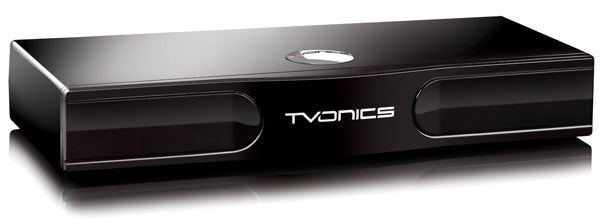
Verdict
Key Specifications
- Review Price: £49.99
TVonics continues its crusade to get the nation switched over to digital TV with a new Freeview box that fits the bill no matter how old your TV is. The MDR-250 was originally developed to meet the requirements for the UK government help scheme for the elderly and disabled, which imposes stringent requirements on performance, ease-of-use, energy efficiency and connectivity, and it’s currently the only Freeview receiver to have earned full marks in Digital UK’s ‘scoreboard’ certification scheme. All of this suggests that the MDR-250 could be the ideal entrée into free digital TV. 
At just 196mm wide, the unit itself is tiny by normal Freeview receiver standards, which is good news if you want to hide it behind the TV, and there’s an infrared extender in the box that allows you to do so. You might be tempted to keep it on show though as it’s an interesting looking little box, with a gloss black top section, a silver circle containing the TVonics logo and very little on the fascia besides a small power LED indicator.
The connections panel on the rear is par for the course, sporting two SCART outputs (for simultaneous connection to a TV and video recorder) and aerial input/output. But unlike the vast majority of receivers the MDR-250 features an RF modulator which sends digital TV pictures from the aerial output and to your TV’s aerial input over a coaxial cable – great news for owners of museum relic TVs with no SCART sockets. Simply rig up the cables, retune an empty analogue channel on your TV to 38 (or a channel of your choice) and away you go. Elsewhere on the rear panel, you’ll find a 3.5mm jack, which outputs analogue stereo or optical digital audio to your AV receiver, and an input for the IR extender.
On the downside, the MDR-250 only offers RGB output from one of its SCART sockets, with the other supplying just composite pictures. If this second SCART (labelled ‘VCR’) is hooked up to a DVD or DVD/HDD recorder with RGB input, you won’t be able to record Freeview in the best possible quality unless you swap over the SCART cables, which is a bit of a nuisance. It’s a common bugbear but one we still find inexplicable.
The supplied ‘easy grip’ remote is virtually the same size as the receiver, and at first glance you can see why the Government was so keen on it – it’s comfortable to hold, big enough to stop you losing it down the back of the sofa and features well-labelled, widely-spaced buttons. There are dedicated buttons for Audio Description and a help guide that explains how to use the various functions on board, something that will go down very well with digital TV newcomers. 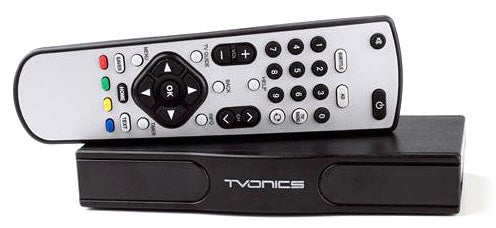
You could almost set up the unit in your sleep. Once the cables are connected, turn on the power and you’re immediately prompted to start the channel tuning process, and pleasingly it found the 51 TV and 25 radio channels very quickly. After that, you can explore the fool-proof main menu that allows you to edit the channel list, set the parental controls, retune channels and check signal strength. Within the settings submenu you’ll find all of the key tweaks, including the ability to change the RF output channel, the aspect ratio and switch the TV SCART output between RGB, S-video and composite.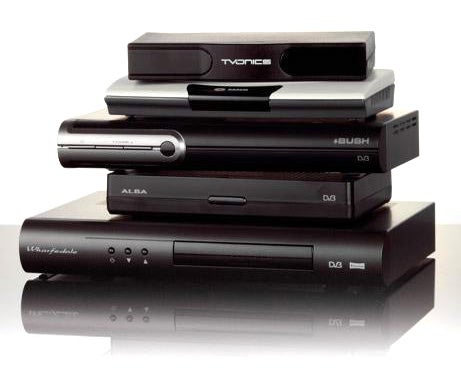
We can’t fault the rest of the onscreen menu design, which again will go down very well with those using a Freeview box for the first time. The 8-day EPG is wonderfully simple to digest, listing eight channels at a time in the familiar horizontal timeline layout, while the coloured keys on the remote let you skip forward and back 24 hours and scroll up and down the channel list. It also shows the date and time, and continues to play the current channel in the background so you can still follow what’s going on.
Hit Info while watching a programme and up pops an info banner that immediately gives you the synopsis and programme duration. But what impressed us the most is the fact that the display isn’t limited to now and next details – instead, it lets you browse programmes for the next few days on any channel. Searching too far ahead caused our box’s picture to black out for a while, which was slightly concerning but could be peculiar to our sample.
Elsewhere, the unit offers all of the features you’ll need to enjoy the full Freeview experience. Digital text performance is exemplary, calling up the MHEG displays quickly and flicking through pages with minimal delay, while the interactive services don’t cause any problems. Subtitles and Audio Description are easy to turn on and off, and both work very well. You can also set the timer from the EPG, which switches to a certain channel at the scheduled time – a feature that comes in handy when using an external recorder with ‘slave mode’ SCART recording. There’s no favourite channels list as such, just the ability to hide unwanted ones.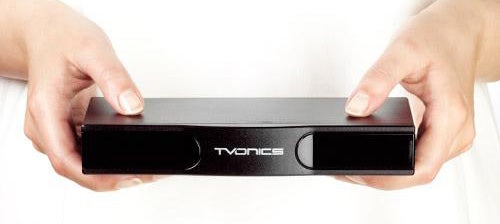
The MDR-250’s pictures are at their best when connected to your TV’s SCART input. Colours are rich and vibrant, there’s no edge bleed to upset the image clarity and it brings a decent amount of detail to the screen. On the downside, there is quite a lot of smearing and block noise, plus the image shimmers gently when reproducing moving objects. Coverage of the British Masters golf, for instance, looked very untidy, with the green grass twitching during camera pans and a smeary outline around certain objects and text. However, to be fair, much of this is down to the poor quality of Freeview broadcasts. Picture quality inevitably gets worse via RF output, but on a small-screen CRT TV the image looks fine.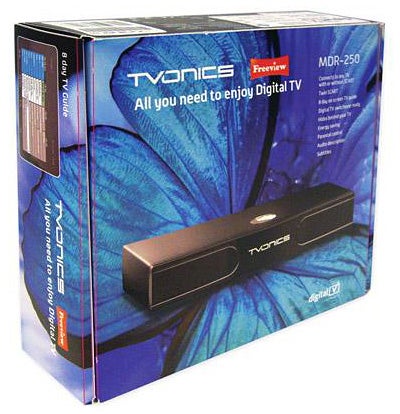
The unit also provides crisp stereo sound, and if you connect the optical digital output to a Dolby Pro Logic amp (using an optional TOSlink to minijack lead or adaptor), you can enjoy some excellent pseudo surround sound with your favourite programmes.
”’Verdict”’
TVonics makes a lot of boasts on its website about the usability and versatility of the MDR-250 and we’re pleased to say that it lives up to them. People getting into Freeview for the first time will absolutely love this unit, as it makes all of the platform’s features easily accessible and goes about its daily TV tasks with pleasing slickness.
What’s more, the inclusion of SCART outputs and an RF modulator means you can watch digital TV on any type of TV no matter how old it is, and with so many ageing TVs still in circulation in the lead up to analogue switch-off, the importance of this fact can’t be overstated. It’s a shame it doesn’t output RGB from both SCARTs and HDMI output would have been nice, but overall this is an excellent digital TV box that offers terrific value for money.
Trusted Score
Score in detail
-
Performance 7
-
Features 8
-
Value 9
-
Design 8

